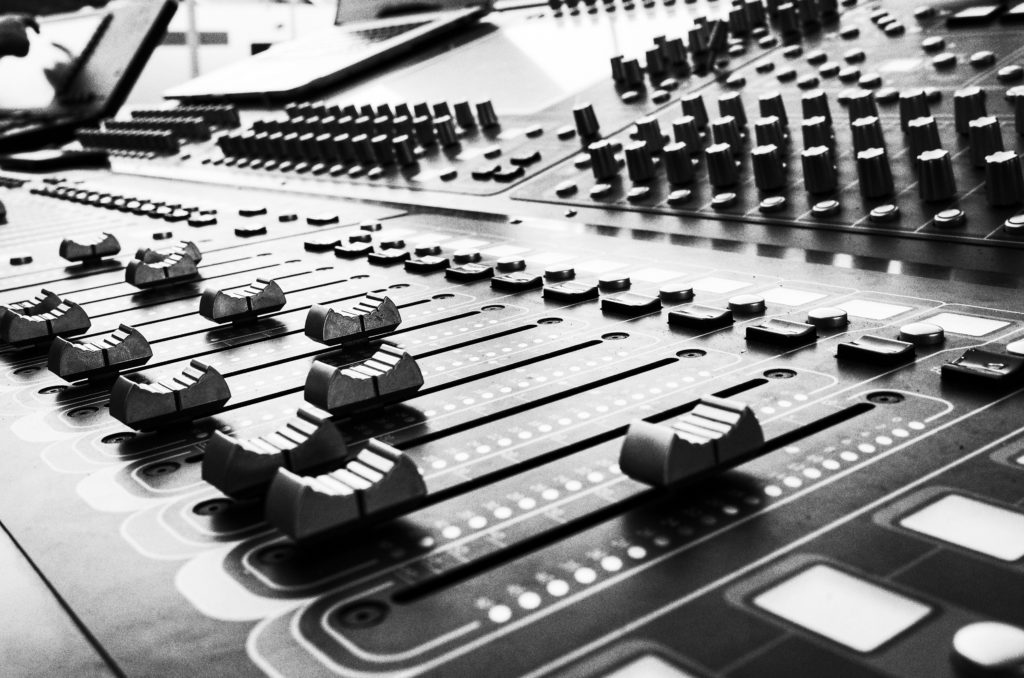Industry performers constantly surprise us with lyrical monuments that persuade our emotions, mood and atmosphere; all in under three minutes. But, it’s not just the words that grasp the audience’s attention. In fact, it’s often the composed music that’s quintessential to the outcome. To keep our everlasting attention, producers layer songs that resonate globally to listeners, while still working to support the artist’s vision. This effectively helps recordings impact the listening experience.
No matter the means of capture, fans are the obvious link to the music industry’s success. An article published in the May 20, 2019 print issue of TWICE magazine explains that rapid advances in technology have pushed out vast improvements to in-home and personal listening devices. Not to mention the development of new platforms for widespread listening.

The rate of growth in consumer markets has challenged the entertainment industry to be more precise for studio and live performance recordings alike. Luckily, professional audio companies are giving industry pros the tools they need to keep up.
Where does quality sound begin?
Excellence starts in the studio. It is imperative that performers find their trademark in the industry in order to resonate with listeners. When competing for top spots on record charts, album sales and song downloads, it makes sense that popularity begins with the quality of audio being captured.
Main sources that affect sound are:
- The power of the microphone and capsules.
- The mixing board used by the engineer.
- Quality of a live performance.
- Soundproofing of a venue.
Artists put their trust in the hands of sound engineers to address these significant needs while recording. Their main source in the manipulation phase relies on the advanced technology used to capture audio that is unique to the individual artist.
Microphone Capabilities
First and foremost, it is important that a clarity-controlled mic is in place to capture detail in the singer’s voice. If the artist’s tonality and range is not obtained during recording, their trademark sound wouldn’t exist on an album as it does in live applications. Consider multi-award-winning artist Christina Aguilera: perhaps the first thing that pops into mind is her singing style, known as ‘melisma.’ Belting out multiple notes while singing one word or syllable requires high-end, industry-quality microphones to translate her sound precisely.
To ensure that her recordings and live performances are on-par with one another, her team undoubtedly goes to the painstaking effort to find the ideal mic solutions for each application. Our client, DPA Microphones has a substantial list of clients in the industry, including rap star Post Malone and R&B artist H.E.R, who rely on the company’s award-winning clarity, ranging from vocal to instrumental, to give fans the best of their sound.
The Future of Mixing
The heart and soul of a recording relies on the transmission of sound from artist to microphone to audio mixer. Multi-track recording and mixing is the reason we hear the arrangement of sounds and how they fold into one another. Let’s be honest, there may be many instances when we don’t understand the lyrics to a song, but we continue to listen and be moved by it because of the instrumentals. With the rise of mixing tools that help highlight the strongest features of a song, producers can now amplify notes that hit our souls.
In fact, audio functions like equalization, compression, gating, limiting and level control amount for the genetic makeup of every and any song you’ve heard in the last decade. According to SynAudCon, digital mixing consoles are used to combine sounds from multiple analog audio channels and convert the files into digital formats for streaming and online listening.
Another of our clients, NUGEN Audio, supplies the Visualizer software, which gives mix engineers the ability to measure, understand and correct audio analysis in production. Additionally, the company’s ISLst software provides sources to master today’s most popular music delivery platforms.
Live Performance
Typically, live performances have a distinct sound that can be distinguished from a studio recording. Besides the “off-script” performance, which feeds from the energy of the audience, other factors play a role in the live sound setting. Outside stage presence has a different sound from an enclosed atmosphere, which typically has less surrounding, reverberating audio. Live performance recordings also do not capture the sound that live audiences hear from loudspeakers, but rather simply the audio as it tracks into the desk. Comparatively, the quality of sound heard by live audiences relies heavily on an amplifying system with enough power to sustain what’s going through it.
Soundproofed & Acoustically Treated Atmosphere
In order to grasp the perfect tones in the artists’ vocals, there needs to be an isolation factor in the setting which it is being recorded. A soundproofing formula that acoustically treats the room will absorb excessive ambience that arises in production. A blog post on our client Acoustical Surfaces Inc.’s site offers a unique look at all the variables needed to enhance the recording experience.
The multitude of conditions to consider for capturing, editing and perfecting acoustics is a staple in the music industry’s ever-growing success. Advancements in consumer technology have raised the bar, setting industry standards at a higher expectancy for quality, clarity and creativity. With the ability to download music at our fingertips, it has never been easier to immerse ourselves in an audio realm that feels intuitive. The skill and technical aspect put into these productions, though often unrecognized, is the backbone of each and every musical genre in the industry.
